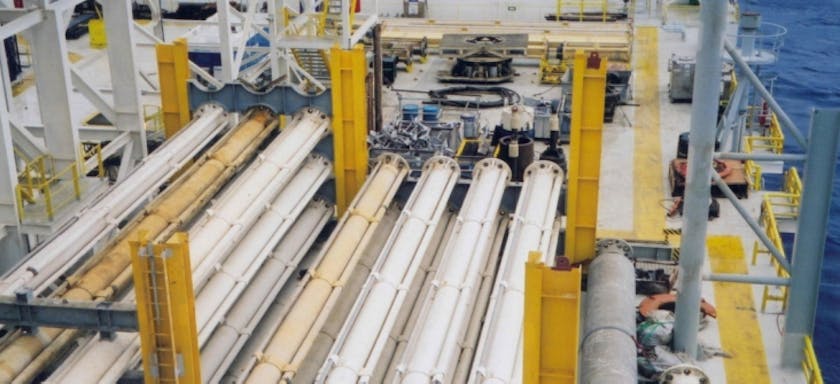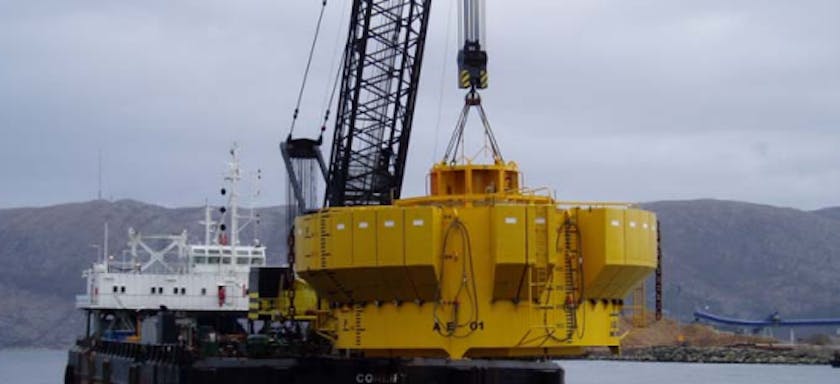Hybrid Riser Towers – Not just for Deepwater
EVENT: OTC Asia
1 Mar 2018
Most people know the Hybrid Riser Tower solution, combining the use of steel pipes in a freestanding bundle and multiple flexible jumpers for connection to a floating host vessel, from the 3 towers installed in 2001 offshore Angola in 1,350m water depth to the Girassol FPSO.
Little known is the fact that the first bundled riser tower, in a slightly different arrangement preceding Girassol, was actually installed by Placid in Green Canyon (1988), and the same riser tower was later re-deployed by Ensearch in Garden Banks (1994, now decommissioned), both in the Gulf of Mexico in less than 650m water depth to a semi-submersible production platform.
This paper describes the adaptation of the bundled hybrid riser tower concept for subsea connection to a FPSO in Indonesia in only 90m water depth. The ‘mini’ riser tower, comprising 6 risers in the bundle and installed in 2013, made full use locally available materials, fabrication labours, skills and facilities, and installation capabilities in the region. This project, and its successful implementation, paves the way for more SE Asian operators to maximise local contents, optimise costs and exercise better project control for their upcoming developments.
This hybrid riser tower solution can lend itself readily for HPHT field developments, or aggressive production fluids, when conventional riser solutions such as bonded or unbonded flexible pipes, and corrosion resistance alloy (CRA) clad steel catenary risers cannot handle the fluid properties or the shallow water depths, respectively. Work is underway to use high quality thermoplastic composite pipe (TCP) as the jumpers in a hybrid tower to overcome the chemical issues.
Authors

Shreenaath Natarajan
Global Director, Malaysia

Shreenaath Natarajan
Global Director, Malaysia
About
Shreenaath holds a Master’s degree in Engineering from the University of Texas, Austin, and has almost 20 years of specialist experience in minimum facility platforms, novel installation methods, deepwater riser engineering, naval architecture, marine hydrodynamics, subsea monitoring, and integrity management of subsea systems. Has been responsible for delivering several EPCI / turnkey minimum facility platforms and deepwater riser systems delivery as a project manager/sponsor ensuring technical, commercial and contracts management from concept to installation. Shreenaath has also been responsible for the day-to-day operations, project management and business development for the Asia Pacific region.
Insights

Frank Lim
Principal Advisor, UK

Frank Lim
Principal Advisor, UK
About
Frank’s offshore oil and gas career began in 1983 upon gaining a PhD in Mechanical Engineering in the UK, and has continued through numerous projects in the North Sea, Gulf of Mexico, West Africa, Brazil and Asia Pacific. Frank established 2H's Kuala Lumpur office in 2006 in an effort to meet growing offshore engineering demands in Malaysia and the Asia Pacific region.
As a fellow of the UK Institution of Mechanical Engineers, Royal Institution of Naval Architects and Society for Underwater Technology, Frank is a regular author of technical papers and speaker at international conferences. In addition to his pioneering work in developing 2H's freestanding riser designs and their use in the 2000’s, he has led 2H into the new frontier of deep-sea mining. Formerly a global director, Frank now assumes the role of technical advisor to the 2H global management team.








